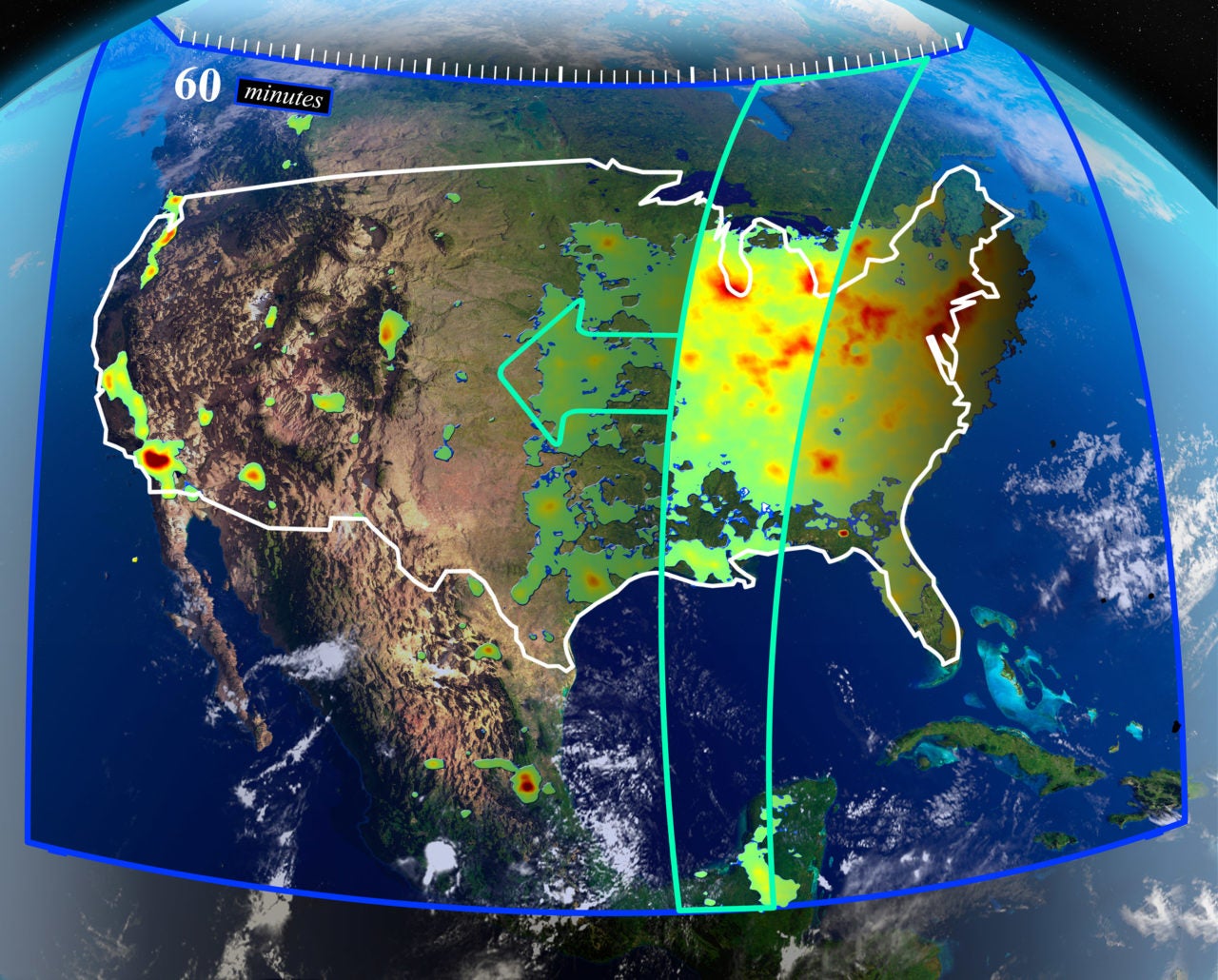NASA’s TEMPO Spectrometer Closer to Completion

TEMPO’s measurements from GEO will create a dataset that improves prediction of air quality and climate forcing. Photo: NASA.
The Tropospheric Emissions: Monitoring of Pollution (TEMPO) instrument, designed and built by Ball Aerospace for NASA, has completed spectrometer testing and verification, Ball Aerospace announced. Under its Earth System Science Pathfinder program, NASA selected TEMPO as the first Earth Venture-Instrument to provide hourly measurements of air quality across North America. This instrument will make precise measurements of the key constituents of air pollution, including nitrogen dioxide, ozone, sulfur dioxide and atmospheric aerosols that have the greatest impact on human health and agriculture productivity.
Data from TEMPO will provide chemical weather maps of air pollutants that can be overlaid onto a map of the continental United States. TEMPO is expected to improve air quality prediction accuracy by 50 percent and improve daylight measurements of atmospheric pollutants across the nation. This instrument will enable high-confidence forecasts of poor air quality events so vulnerable citizens such as asthma sufferers, the elderly and young children can take proper precautions, and aid farmers in making decisions to maximize crop yields.
TEMPO will leverage the U.S. Air Force’s Hosted Payloads Solutions (HoPS) contract, a service the Air Force uses to match payloads with commercial hosts, such as communications satellites that will fly in Geostationary Earth Orbits (GEO). NASA Langley, located in Hampton, Virginia, manages the TEMPO Mission and will procure the spacecraft host. The launch date is yet to be determined.